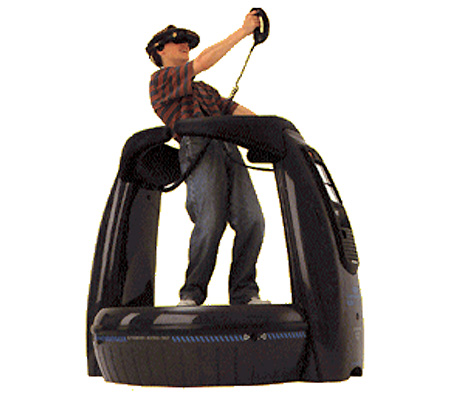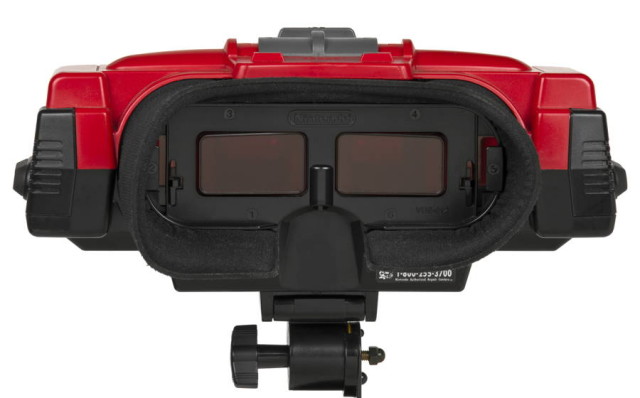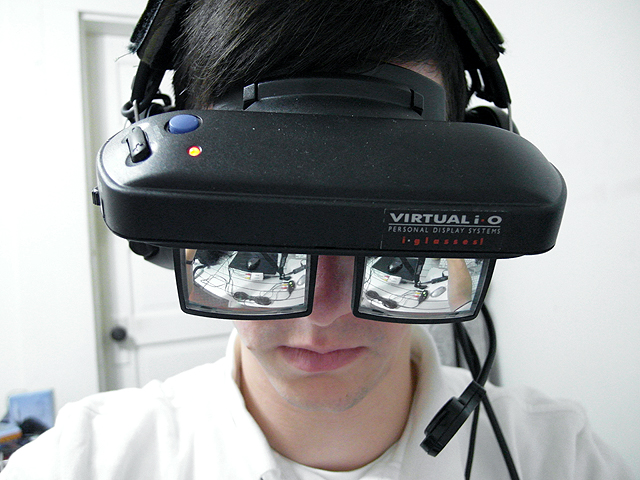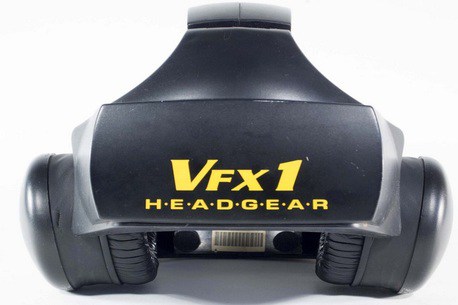With consumer devices such as the Oculus Rift and the HTC Vive hitting the tech scene, virtual reality (VR) has become something of a fascination, but these headsets aren’t the first of their kind. VR gaming has been around for decades, but it was never a success, and that could be due to a number of reasons. Perhaps it was because of hefty price tags or a market that just wasn’t ready to embrace the technology. Or maybe it was because it looked ridiculous (while also being fun). In order to understand what may be different this time around, it’s important to take a peek into the iterations of VR from the past. Below are four great systems of their time, including the good, the bad, and the ugly.
Virtuality

Image via cheatsheet.com.
Back in the early 1990s, Virtuality Group created a set of VR systems that included a stand-up arena system and a vehicle cockpit of sorts. Both required headsets with built-in screens to immerse gamers into the positions of the characters they played in the games. Because of its multi-player first-person adventure titled Dactyl Nightmare, which allowed players to run around shooting at one another as a pterodactyl attacked them, along with several other games, Virtuality made a fun and memorable presence within arcades.
But it had one downfall: heavy price tags, which were in the tens of thousands of dollars. This was far too expensive for the average consumer, and it’s what kept Virtuality from becoming mainstream enough to make it to the next revolution in technology.
Virtual Boy

Image via ubergizmo.com.
At the 1995 Consumer Electronics Show, Nintendo introduced a device called VR-32, claiming it allowed players to be immersed into the game they were playing. It would later become known as the Virtual Boy, the first home VR device for gaming.
Officially released in both the Japanese and American markets in the summer of ’95, the Virtual Boy came with one game, Mario’s Tennis , which would give consumers the first taste of VR technology in the home. But despite being backed by one of the largest game companies of its time, it did not succeed.
Though it was equipped with stereoscopic 3D, the Virtual Boy wasn’t very colorful, and it lacked high-quality graphics. There was no head or hand-tracking, making it more of a 3D-viewing experience rigged to look like VR.
iGlasses

Image via rtftechnologies.org.
Apple wasn’t the first one to introduce an “i” product. Back in the ‘90s, Virtual I/O created a headset called iGlasses, and it was capable of stereoscopic 3D with color and head-tracking. The visuals moved when players turned their heads, and it was priced under $1,000.
So why were the iGlasses a flop? As the story typically went with VR, nothing truly ignited the market for it. On the plus side, the name of the device was a good idea.
VFX-1

Image via virtual-reality-shop.co.uk.
It was the middle of the ‘90s when Forte Technologies unveiled the VFX-1, and it proved to be a highly capable VR headset for its time. It was equipped with stereoscopic 3D, multi-axis rotation for head-and-hand-tracking, and the ability to play games that weren’t supported by the system.
Marked at $600, it was a bit pricy, but it was an advanced technology compared to the other headsets on the market. But, as with the other systems at the time, the world just wasn’t ready for a VR renaissance.
Advertisement
Learn more about Electronic Products Magazine





